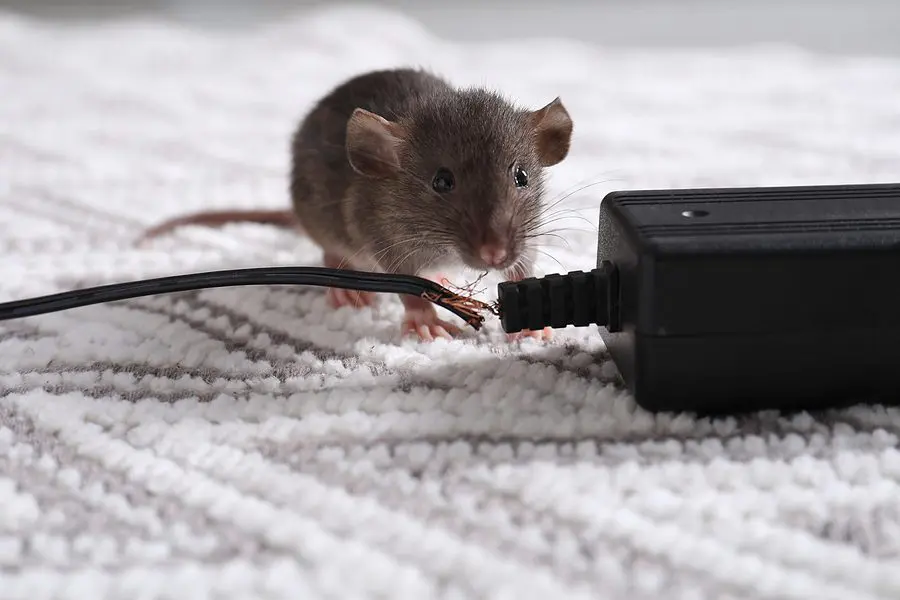Tips on How to Keep Mice Out of Your Santa Fe House Winter 2023

Rodents such as rats and mice can lead you to numerous problems at home. For example, they can contaminate food, damage electrical wires, and chew your documents. They can even spread diseases among you and your family members. This is why you should pay special attention to keeping mice out of your home as much as possible.
How to control mice population at home
Discover the warning signs of mice, how to get rid of these unwelcome guests, and non-poisonous ways to keep them out of your home. Make use of one or more of these twelve techniques to permanently repel mice.
Whenever a mouse or rat chooses to pay a visit, it is usually not seen at first. Typically, the following indicate the presence of rats or mice:
- Mouse droppings: Mouse droppings are little, black excrement from rodents that are often found along walls or in areas where food is available. They resemble microscopic grains of rice.
- Food chew marks: Among the destructive indicators are holes chewed through in boxes, dry goods, pet food, or grass seed bags in the garage.
- Baseboard scratch marks: Gnawed or rub markings are often seen along baseboards and in the vicinity of any floor openings, such as those where radiator pipes pass through.
- Mice nests: Mice build tiny nests in disused drawers or behind cabinets using wood shavings or torn paper.
- Mouse scent: A strong stench that resembles a blend of old straw, urine, and rotting is known as the “musky smell.”
- Pets aware of the presence of mice: Your dog or cat can show signs of alertness, such as jumping up and down or paying close attention to the walls.
- Scurrying or scratching noises: Especially at night when the home is quiet and dark, you can hear scurrying or scratching noises on the walls or flooring.
Verifying that all possible access sites are closed in your home’s walls and foundation is the single most crucial preventative action you can take to keep mice and rats at bay. The ideal seasons to check the outside are autumn and winter when rodents try to sneak inside to avoid the cold.
Few other tips to keep in mind
Mice may squeeze through gaps as tiny as 1/4 of an inch in diameter to get access. Use masonry repair material to seal up foundation cracks, and check window and door sill joints for any flaws that may let mice in. Spray foam may be chewed through by rats, so avoid using it. Alternatively, use screws to cover access sites with wire mesh patches or firmly pack holes with steel wool.
You should also check the attic because mice love to spend time in a warm place. But there isn’t a totally effective rodent-proof insulation available right now.
In front of snow-covered trees is a bird feeder with a red-headed woodpecker feeding from a seed pack. Squirrels are known to often raid bird feeders because the seeds and crushed grains that make up most bird food combinations are a delicious feast for rodents. While feeding birds is a noble pastime, don’t be shocked if rodents such as mice and rats go towards the area surrounding your feeders. Place any bird feeders you may have as far away from the house as you can.
As soon as you purchase dog and cat food, move it into airtight, sealed storage containers. More than one homeowner has simultaneously emptied out a squeaky mouse and poured out a dish of dog chow. For rats, dry pet meals are like candy from heaven, so keep them in airtight containers kept high above ground.
Close all trash cans tightly
Tightly sealed with airtight lids, garbage cans and bins placed next to the home or garage attract rodents like rats and mice, as well as larger pests like opossums, skunks, raccoons, and stray dogs and cats. As an extra precaution, place these utility containers on platforms above ground, keep them as far away from your home as you can, and fasten the lids with hefty boulders or bungee cords. In a similar vein, the home’s trash cans need to be emptied often. Never let your waste heap become too big since that invites rats.
Manage Plantings on Foundations
Dense shrubs and garden planting that butt up close to the house provide hiding spots for mice and rats (and termites) as they seek entry holes through foundations or walls.
Shrubs along the house should be planted a few feet away from the foundation, and make sure the soil level is low enough that mice cannot squeeze their way up behind the siding.
Seal Dry Foods
Rodents will not reside in your house if they can’t find a food source. Flour, sugar, and other food kept in bags or paper cartons are easily broached by rodents and bugs, such as weevils. Instead, keep these foods in tightly sealed plastic or metal containers on high shelves or the refrigerator.
Clean Floors and Countertops
Clean up crumbs or food scraps on floors or countertops. Always have a handy sweeper to capture crumbs, and never leave uneaten bowls of pet food in dishes on the floor. If you have a pet bird, sweep up any scattered seeds that might have fallen beneath the cage.
Keep Outside Doors Closed
Garage doors left open can invite rats and mice, especially in the fall when these rodents seek a warm place for winter. Ensure weather seals along the bottom edges of garage doors are in good shape.
Get into the habit of closing your garage door immediately after entering or exiting your car and keep side entry doors to the garage closed. Keep sliding patio doors and basement windows closed, or at least protected with screens, to prevent rodents from entering. Never leave a garage door or other entries open overnight. Rodents are especially active in the dark hours.
Set Traps and Bait
Set a few traps and bait stations indoors as a diagnostic measure throughout the year. A live trap is a humane and poison-free way to trap and release rodents while alerting you when they are finding entry into your home.
The best live traps are chamber-type devices with a spring-loaded door that snaps shut when the mice enter in search of food. Avoid inhumane sticky trap designs since mice have been known to chew their feet to free themselves from the adhesive.
If you have no qualms about killing mice, traditional spring traps are a good choice; they usually kill mice quickly and without much pain to the creature.
WARNING
If you decide to use poison baits, never set them outdoors where squirrels and pets can find and eat them. Rodent poisons are a significant cause of pet poisoning in the United States. Plus, indoor mice that are killed by poisons may die in the walls, leaving you with the issue of their decaying remains.
Use Natural Repellents
Mice have a strong sense of smell and don’t like certain odors. In one study, eucalyptus oil showed some success in repelling rats. However, efficacy was improved when the oil was applied daily compared to once a week.2 Other natural repellents include peppermint oil, cayenne, citronella, and cinnamon.
Chemical smells that keep mice away include ammonia, bleach, mothballs, and fabric dryer sheets. Irish Spring soap may also be a scent that mice despise, although it’s not proven as an effective repellent.
Adopt a Pet Predator
A pet that loves to hunt prey, or even an owl nesting outdoors in your garden, can be excellent rodent control. But because pet food is always present in a house with pets, rodents may find your home a good food source.
However, a young, aggressive cat or a dog species, such as a terrier with a reputation for hunting small animals, can often catch rodents before they can take up housekeeping and form nests to reproduce.
Remove Clutter
Mice like to hide; a cluttered home offers many spots for making mouse nests. Keeping tidy by removing boxes, newspapers or magazines, and trash from the floor will dissuade a mouse from moving in. Move boxes up on shelves and out of easy reach. Darker, less frequented spots like basements and closets are prime mouse hiding spots. Also, remove clutter in the yard, shed, or garage. If you have a compost pile, keep it far from the house.
